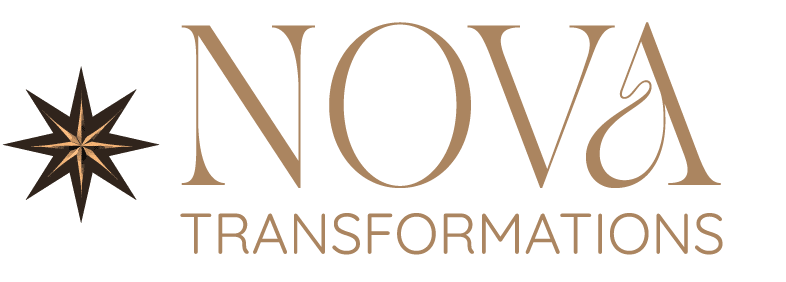Dual diagnosis therapy methods explained can guide you toward a recovery plan that addresses both substance use and mental health concerns concurrently. When you live with a co-occurring disorder, it’s common to feel uncertain about which therapies will best support your journey. This article serves as an informational resource, walking you through clinical and holistic modalities that drive long-term change in Charlotte rehab programs.
About half of all people who experience a substance use disorder also develop a mental health condition, and in 2023 nearly 20.4 million U.S. adults had a dual diagnosis [1]. Treating these complex needs together rather than in isolation improves outcomes, reduces relapse risk, and empowers you to build healthier coping skills. By understanding the range of evidence-based therapies—from Cognitive Behavioral Therapy to experiential and creative approaches—you can find the right blend of methods for your unique situation.
As you explore these options, remember that recovery is highly individual. You may benefit from a combination of behavioral therapies, medication management, and holistic practices tailored to your personal goals and challenges. Use this guide to compare treatments, learn about their benefits, and take the first steps toward a comprehensive plan that promotes lasting wellness.
understand dual diagnosis
Dual diagnosis refers to the simultaneous presence of a mental health disorder and a substance use disorder. You might know this as “co-occurring disorders.” Conditions such as depression, anxiety, bipolar disorder, or PTSD often overlap with alcohol or drug misuse. Research shows that 50 percent of people with a substance use disorder also have a mental health condition, underscoring the need for integrated treatment approaches [2].
why dual diagnosis matters
When these disorders interact, each can exacerbate the other. For example, untreated depression may drive you to self-medicate with alcohol, while substance use can worsen anxiety or trigger mood swings. Addressing only one condition can leave the other unmitigated, increasing the risk of relapse or crisis. Integrated care ensures both aspects are treated together, helping you achieve a more stable recovery.
prevalence and impact
- In 2014, about 7.9 million U.S. adults had co-occurring conditions [3]
- Adolescents in treatment studies show over 60 percent with both substance use and non-substance disorders
- Young adults with serious mental illness meet criteria for substance use disorders at a rate of 36–40 percent [1]
These figures highlight the widespread nature of dual diagnosis and its impact across age groups. Recognizing the complexity of your situation is the first step toward finding therapies that address the whole person.
choose integrated treatment
Integrated treatment combines mental health and addiction services within a coordinated plan. Rather than shifting between separate providers, you work with a unified team that collaborates on your care. This approach reduces gaps in communication, streamlines your experience, and enhances continuity.
benefits of integration
- Treats mental health and substance use simultaneously, acknowledging their interplay
- Encourages consistent monitoring of your progress across providers
- Improves motivation and adherence to treatment recommendations [4]
A randomized trial showed that patients receiving integrated care for anxiety or depression alongside substance use disorders experienced a greater increase in motivation after 12 months compared to those in separate treatment settings [4].
core treatment components
An effective integrated program typically includes:
- Motivational interviewing to build readiness for change
- Cognitive Behavioral Therapy (CBT) for symptom management
- Medication management tailored to your dual diagnosis
- Support groups and peer involvement
By combining these elements, integrated treatment addresses biological, psychological, and social factors that influence recovery.
explore behavioral therapies
Behavioral therapies form the backbone of evidence-based care for dual diagnosis. They help you identify and modify patterns of thought and behavior that contribute to both mental health symptoms and substance use.
cognitive behavioral therapy
CBT equips you with skills to challenge negative thinking and replace it with healthier perspectives. It’s especially effective in dual diagnosis because it can target both mood symptoms and addictive behaviors concurrently. You learn practical techniques for stress management, problem-solving, and emotional regulation, reducing relapse risk and improving overall well-being [3].
Consider reading more about dbt vs cbt for substance use disorders if you’re weighing different behavioral approaches.
dialectical behavior therapy
Dialectical Behavior Therapy (DBT) emphasizes emotional regulation, distress tolerance, and interpersonal effectiveness. It can be especially helpful if you struggle with intense emotions or self-destructive behaviors. DBT teaches you to balance acceptance of difficult feelings with proactive strategies to change harmful patterns.
motivational interviewing
Motivational Interviewing (MI) is a client-centered technique that helps resolve ambivalence about change. Through skilled conversations, your therapist guides you to articulate your own reasons for pursuing recovery, strengthening intrinsic motivation and commitment.
contingency management
Contingency Management uses positive reinforcement—such as vouchers or privileges—to reward abstinence and treatment adherence. This approach can jump-start engagement in early recovery phases and complement other therapies by providing tangible incentives.
consider holistic modalities
Alongside clinical interventions, holistic therapies support healing on emotional, physical, and spiritual levels. These methods foster resilience and self-awareness, often enhancing conventional treatment outcomes.
mindfulness-based interventions
Mindfulness practices cultivate moment-to-moment awareness of thoughts and sensations, reducing reactivity to stress and cravings. Techniques include guided meditation, breathing exercises, and mindful movement.
- Learn specific mindfulness breathing techniques for cravings
- Explore the benefits of mindfulness in addiction treatment
- Try mindfulness-based relapse prevention as part of aftercare
experiential therapy
Experiential approaches engage you in activities that promote emotional healing through direct experience. You might participate in outdoor challenges, role-playing exercises, or creative projects that help process trauma and build coping skills.
- Read about experiential therapy for emotional healing
- Discover how experiential therapy builds emotional resilience
creative expression therapies
Art, music, and movement therapies offer nonverbal avenues to explore feelings that can be difficult to articulate. You might:
- Use painting or drawing to externalize inner thoughts [5]
- Engage in dance or drama to release tension and foster self-discovery
These methods unlock new pathways to insight and growth.
somatic therapy
Somatic therapies focus on the body’s response to trauma. Through techniques like breathwork, touch, and guided movement, you learn to release stored tension and reconnect with your physical self.
address medication management
Medication management plays a key role in stabilizing mental health symptoms and supporting your participation in therapy. A psychiatrist or nurse practitioner oversees your regimen to ensure safety and effectiveness.
role of psychiatric medications
- Antidepressants can restore brain chemicals linked to mood regulation, easing depression and anxiety
- Anxiolytics help reduce panic and high-anxiety states
- Antipsychotics manage symptoms such as hallucinations or severe mood swings
tailoring your medication plan
Effective medication management considers:
- Your specific diagnoses and symptom profile
- Potential interactions with substances
- Side effect tolerability
- Regular monitoring and adjustments
Working closely with your medical team ensures you can engage fully in both clinical and holistic therapies.
engage group support
Peer connection offers encouragement, accountability, and shared experience. Group settings can take various forms depending on your preferences and needs.
benefits of group therapy
Group therapy helps you realize you’re not alone, provides multiple perspectives on coping strategies, and fosters a sense of belonging. You can read more about group therapy benefits in addiction recovery.
small group approaches
Smaller cohorts allow for deeper personal sharing and tailored feedback. Consider programs that use a small group therapy approach in rehab to ensure you receive focused attention.
trauma-informed care
If trauma underlies your struggles, it’s essential to work with clinicians trained in trauma-informed care in addiction treatment. This ensures that your past experiences are acknowledged and safely integrated into your treatment plan.
create individualized plan
No two journeys are the same. Your recovery plan should reflect your history, strengths, and goals.
assessing your needs
A comprehensive assessment explores:
- Your mental health and substance use history
- Co-occurring medical conditions
- Personal values and cultural factors
- Support systems and life circumstances
collaborating with your team
You and your providers co-create a roadmap that may include combinations of:
- Evidence-based therapies like CBT or DBT
- Holistic practices such as yoga and meditation [6]
- Supportive groups and community resources
- Aftercare planning to sustain progress
Explore how individualized therapy for long-term success can shape your recovery journey.
find your therapy fit
Evaluating treatment options involves matching therapy methods to your unique needs:
- Identify core challenges: trauma, mood symptoms, addictive patterns
- Prioritize therapies that address those areas directly
- Consider practical factors: program length, location, cost, insurance coverage
- Seek programs that integrate multiple modalities and offer ongoing support
If you value structured clinical care, look for programs emphasizing CBT, DBT, and medication management. If you’re drawn to creative or mind-body practices, explore centers known for experiential therapy, art and music therapy, or holistic addiction treatment programs [7].
next steps in Charlotte
Reach out to local rehabs and schedule assessments to tour facilities, meet clinicians, and discuss your recovery goals. Ask about staff qualifications, approach to dual diagnosis, and options for aftercare. A personalized consultation will help you determine whether a center’s offerings align with your vision for lasting change.
Embarking on this path can feel daunting, but understanding your therapy options empowers you to make informed choices. By integrating clinical and holistic modalities, you create a strong foundation for healing both mind and body. Your journey toward long-term recovery begins with finding the combination of therapies that feels right for you.
References
- (Recovery In Motion)
- (Cleveland Clinic)
- (Aquila Recovery Clinic)
- (BMC Psychiatry)
- (art and music therapy in addiction recovery)
- (using yoga and mindfulness in treatment)
- (benefits of holistic addiction treatment programs)








